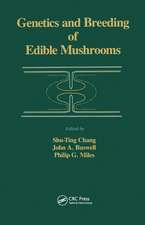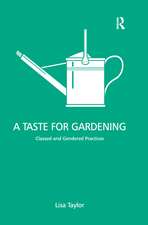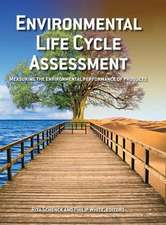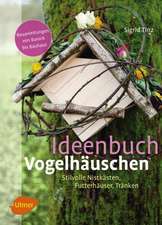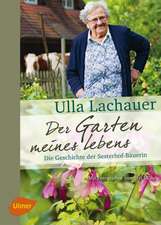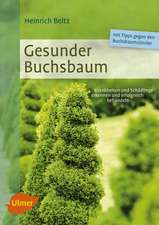Garden Practices and Their Science
Autor Geoff Dixonen Limba Engleză Paperback – 3 ian 2019
Achieving the manipulation of plant life is described in eight full-colour, well-illustrated chapters covering the growing of potatoes, bulb onions, legumes, small-seeded vegetables, soft fruit, bulbs and herbaceous ornamentals in great detail. Environmental factors controlling the successful husbandry of these crops is described in simple, non-technical language, increasing gardeners’ enjoyment and competence. Gardeners are also informed of the tools and equipment they require and their safe use. Also provided are a series of simple, straightforward tests identifying the aerial and soil environments beneficial for plant growth using readily accessible domestic tools. Discussions of very straightforward techniques for vegetative propagation conclude this book. Each chapter ends with a list of the gardening knowledge that has been gained by readers. The structure of this book fulfils a longstanding need for descriptions of practical skills integrated with the corresponding biological reactions of plants. Emphasis is placed on gardeners’ development of healthy soils, which encourage vigorous, active root systems capable of withstanding stresses—an aspect of gardening that rarely receives sufficient attention.
Tailored for readers requiring clear and concise directions, this very practical book is an instruction manual directed at early-stage gardening learners. These include people of all ages and requirements such as new garden owners, allotment-holders, apprentices and students of basic levels in the Royal Horticultural Society’s or City & Guilds qualifications, career changers, community gardeners and those needing applied biological knowledge for GCSE examinations.
| Toate formatele și edițiile | Preț | Express |
|---|---|---|
| Paperback (1) | 234.26 lei 3-5 săpt. | +29.97 lei 7-13 zile |
| Taylor & Francis – 3 ian 2019 | 234.26 lei 3-5 săpt. | +29.97 lei 7-13 zile |
| Hardback (1) | 764.20 lei 6-8 săpt. | |
| Taylor & Francis – 14 dec 2018 | 764.20 lei 6-8 săpt. |
Preț: 234.26 lei
Nou
Puncte Express: 351
Preț estimativ în valută:
44.83€ • 47.14$ • 37.04£
44.83€ • 47.14$ • 37.04£
Carte disponibilă
Livrare economică 26 martie-09 aprilie
Livrare express 12-18 martie pentru 39.96 lei
Preluare comenzi: 021 569.72.76
Specificații
ISBN-13: 9781138209060
ISBN-10: 1138209066
Pagini: 316
Ilustrații: 3 Tables, black and white; 11 Line drawings, color; 378 Halftones, color; 389 Illustrations, color
Dimensiuni: 189 x 246 x 17 mm
Greutate: 0.78 kg
Ediția:1
Editura: Taylor & Francis
Colecția Routledge
Locul publicării:Oxford, United Kingdom
ISBN-10: 1138209066
Pagini: 316
Ilustrații: 3 Tables, black and white; 11 Line drawings, color; 378 Halftones, color; 389 Illustrations, color
Dimensiuni: 189 x 246 x 17 mm
Greutate: 0.78 kg
Ediția:1
Editura: Taylor & Francis
Colecția Routledge
Locul publicării:Oxford, United Kingdom
Public țintă
General, Professional, and UndergraduateCuprins
Preamble: safety in the garden
Chapter 1 What makes plants tick?
Chapter 2 Understanding soil and growing potatoes and onions
Chapter 3 Growing legumes from seed and seedlings
Chapter 4 Growing small-seeded vegetables
Chapter 5 Growing soft fruit
Chapter 6 Bulbous plants
Chapter 7 Flowering plants
Chapter 8 Plant propagation
Chapter 1 What makes plants tick?
Chapter 2 Understanding soil and growing potatoes and onions
Chapter 3 Growing legumes from seed and seedlings
Chapter 4 Growing small-seeded vegetables
Chapter 5 Growing soft fruit
Chapter 6 Bulbous plants
Chapter 7 Flowering plants
Chapter 8 Plant propagation
Notă biografică
Geoff Dixon is Professor of Horticulture and an internationally distinguished biological and horticultural communicator, educator and research scientist. He has worked in Cambridge, then the Scottish Universities (Aberdeen and Strathclyde) and Colleges of Agriculture, and is now a member of the School of Agriculture, Policy and Development (SAPD) at the University of Reading, UK.
Recenzii
I highly recommend this wonderful book to anyone with a thirst for knowledge about growing plants whether as a professional or enthusiastic amateur, or anyone who wishes to nurture and encourage that interest in a friend or family member.
-Richard Bar1ey B.App.Sct (Hort) MCIHort FLS Director of Horticulture, Leaming & Operations, Royal Botanic Gardens Kew. From the Review Garden Practices and their Science, The Horticulturist 28 (1), Spring 2019.
The writing style is clear and precise with abundant illustrations, and its approach is very much ‘what to do.’ The objective of the advice provided is the generation of the most abundant blooms or the most vegetables.
– Dr. SG Compton. From the Review Garden Practices and their Science, The Biologist 66 (2), 2019.
This combination of practice and science will be one of the great strengths of this unique and remarkable book, which will give the reader a lot of knowledge that he or she can apply immediately in everyday practice.
- Robert J. Bogers, ISHS Council Member, The Netherlands
Garden Practices and Their Science (Routledge) guides gardeners in the practical arts of plant husbandry and in their understanding of its underpinning principles. The author, Professor Dixon, is an acknowledged and internationally respected horticulturist and microbiologist. The structure of this book describes practical skills integrated with the corresponding biological reactions of plants. Emphasis is placed on gardeners’development of healthy soils.
- Matthew Apple, Horticulture Week
Interesting and a valuable view of how science and practice work together.
-Brian Humphrey, previously Director of Production, Notcutt’s Nurseries and author of The Benchgrafter’s Handbook
A highly engaging practical tone is taken toward the current fashion of growing fruit and vegetable crops organically or naturally.
-Chris Bird, Lecturer in Horticulture, Sparsholt College, Hampshire, The Plantsman, The Royal Horticultural Society, London.
For anyone wanting to understand the science that underpins horticulture and gardening, then this soft back is a good place to start.
-Ian Hodgson, Garden News, Bauer Consumer Media, Great Magazines
The book sets out to inform and educate in a practical way, which it most certainly does and the reader is invited to test their understanding of each aspect by engaging with a list of questions at the end of each chapter. In answering these questions, one gets the sense of forming building blocks, and consolidating a foundation from which to move on to another aspect.
-Tony Girard, Chemistry & Industry, Society for Chemical Industry
Printed in a practical, compact size this publication takes a new look at an area of quite familiar territory for introductory study or background information.
-Chris Bird, The Plant Review, Royal Horticultural Society
"An easy read, which one can dip in and out of, Garden Practices and Their Science is also a very good reference book. Just about every fundamental aspect of plant science is visited, from the biology of plants, through growing a variety of crops and plants, to understanding soil sciences. In addition, the author discusses the tools requred in the garden and how to use them safely...This book is a welcome addition to my library, and I am sur eanyone with an interest in gardening will want to have it to hand."
-Anthony Girard, Horticulturalist
Richard Barley, Director of Horticulture, Learning and Operations at Kew Gardens didn’t fill the review form in, but sent the following email (also placed in the proposal folder):
I think that this is a really good proposal for a book. The subject areas and the approach identified by Geoff Dixon are relevant and should be very engaging. The ‘experiment’ model is very strong, and should be effective. Geoff is a well-respected academic in the world of horticulture, and I believe that he has identified a real gap in the current range of horticultural texts. For these reasons I fully support this proposal.
Mike Hall, consultant working on several horticultural boards and exam committees
This is an excellent document that I have enjoyed reading. In the belief that I should pass meaningful comments as I have read through the document, I have used Word’s ‘track changes’ to pass comments on the text. Many of these may seem very trivial and I very much hope that neither you (or Geoff) feel that I have been too critical.
GF – Geoff has seen these, and Mike’s comments helped me to push through a slightly different way of Geoff approaching this book that will help in the long run. The language level may need some work when it comes in, but hopefully not too much.
There is a market for this book but I really worry that Geoff’s stated customer base may be too broad. At present it seems to me that the draft is aimed at the spectrum from grandparents encouraging their grandchildren through career-changers to the college/university students. If one has to choose, then I would aim it at everyone other than the college/university candidate. This latter group is a). relatively small in number and declining at only a very few hundred students a year and b). catered for in other ways such as YouTube/social media, on-line publications and institution tutors. I can see how Geoff’s book might have appeal though to the distance/blended learning type ‘candidate’, a group that invariably embraces many very keen amateurs.
GF – discussed with Geoff and will be addressed in the book. Target market is people starting L2/3 courses, and secondary market is people new to gardening.
The sequence of ‘experiments’ seems fine to me and the first few are correctly described. However, an ‘experiment’ that runs over many months (e.g. blackcurrants) might usefully be described differently. Maybe I’m being pedantic but I think many readers will misconstrue the word when they read the detail of the later ‘experiments’ that seem to me to be ‘horticultural practice’.
GF – I’ve talked to Geoff about this and stressed that’s important not to require completion of the experiments in order for the book to be used for learning, so each one will be discussed in detail with results in the appropriate place. I’ve also given him a template to work to for each section within the book.
Charles Adams, lead author of Principles of Horticulture
The technical content is excellent and could be, potentially, the basis of very useful resource material for learning plant science especially that underpinning horticulture.
Above all there needs to be clarification of the TARGET AUDIENCE and PURPOSE to indicate the level and how it is to be used. This will help establish more accurately the content and the style.
GF – discussed with Geoff, and has been dealt with. I’ve also provided a writing template for him to ensure consistency.
-Richard Bar1ey B.App.Sct (Hort) MCIHort FLS Director of Horticulture, Leaming & Operations, Royal Botanic Gardens Kew. From the Review Garden Practices and their Science, The Horticulturist 28 (1), Spring 2019.
The writing style is clear and precise with abundant illustrations, and its approach is very much ‘what to do.’ The objective of the advice provided is the generation of the most abundant blooms or the most vegetables.
– Dr. SG Compton. From the Review Garden Practices and their Science, The Biologist 66 (2), 2019.
This combination of practice and science will be one of the great strengths of this unique and remarkable book, which will give the reader a lot of knowledge that he or she can apply immediately in everyday practice.
- Robert J. Bogers, ISHS Council Member, The Netherlands
Garden Practices and Their Science (Routledge) guides gardeners in the practical arts of plant husbandry and in their understanding of its underpinning principles. The author, Professor Dixon, is an acknowledged and internationally respected horticulturist and microbiologist. The structure of this book describes practical skills integrated with the corresponding biological reactions of plants. Emphasis is placed on gardeners’development of healthy soils.
- Matthew Apple, Horticulture Week
Interesting and a valuable view of how science and practice work together.
-Brian Humphrey, previously Director of Production, Notcutt’s Nurseries and author of The Benchgrafter’s Handbook
A highly engaging practical tone is taken toward the current fashion of growing fruit and vegetable crops organically or naturally.
-Chris Bird, Lecturer in Horticulture, Sparsholt College, Hampshire, The Plantsman, The Royal Horticultural Society, London.
For anyone wanting to understand the science that underpins horticulture and gardening, then this soft back is a good place to start.
-Ian Hodgson, Garden News, Bauer Consumer Media, Great Magazines
The book sets out to inform and educate in a practical way, which it most certainly does and the reader is invited to test their understanding of each aspect by engaging with a list of questions at the end of each chapter. In answering these questions, one gets the sense of forming building blocks, and consolidating a foundation from which to move on to another aspect.
-Tony Girard, Chemistry & Industry, Society for Chemical Industry
Printed in a practical, compact size this publication takes a new look at an area of quite familiar territory for introductory study or background information.
-Chris Bird, The Plant Review, Royal Horticultural Society
"An easy read, which one can dip in and out of, Garden Practices and Their Science is also a very good reference book. Just about every fundamental aspect of plant science is visited, from the biology of plants, through growing a variety of crops and plants, to understanding soil sciences. In addition, the author discusses the tools requred in the garden and how to use them safely...This book is a welcome addition to my library, and I am sur eanyone with an interest in gardening will want to have it to hand."
-Anthony Girard, Horticulturalist
Richard Barley, Director of Horticulture, Learning and Operations at Kew Gardens didn’t fill the review form in, but sent the following email (also placed in the proposal folder):
I think that this is a really good proposal for a book. The subject areas and the approach identified by Geoff Dixon are relevant and should be very engaging. The ‘experiment’ model is very strong, and should be effective. Geoff is a well-respected academic in the world of horticulture, and I believe that he has identified a real gap in the current range of horticultural texts. For these reasons I fully support this proposal.
Mike Hall, consultant working on several horticultural boards and exam committees
This is an excellent document that I have enjoyed reading. In the belief that I should pass meaningful comments as I have read through the document, I have used Word’s ‘track changes’ to pass comments on the text. Many of these may seem very trivial and I very much hope that neither you (or Geoff) feel that I have been too critical.
GF – Geoff has seen these, and Mike’s comments helped me to push through a slightly different way of Geoff approaching this book that will help in the long run. The language level may need some work when it comes in, but hopefully not too much.
There is a market for this book but I really worry that Geoff’s stated customer base may be too broad. At present it seems to me that the draft is aimed at the spectrum from grandparents encouraging their grandchildren through career-changers to the college/university students. If one has to choose, then I would aim it at everyone other than the college/university candidate. This latter group is a). relatively small in number and declining at only a very few hundred students a year and b). catered for in other ways such as YouTube/social media, on-line publications and institution tutors. I can see how Geoff’s book might have appeal though to the distance/blended learning type ‘candidate’, a group that invariably embraces many very keen amateurs.
GF – discussed with Geoff and will be addressed in the book. Target market is people starting L2/3 courses, and secondary market is people new to gardening.
The sequence of ‘experiments’ seems fine to me and the first few are correctly described. However, an ‘experiment’ that runs over many months (e.g. blackcurrants) might usefully be described differently. Maybe I’m being pedantic but I think many readers will misconstrue the word when they read the detail of the later ‘experiments’ that seem to me to be ‘horticultural practice’.
GF – I’ve talked to Geoff about this and stressed that’s important not to require completion of the experiments in order for the book to be used for learning, so each one will be discussed in detail with results in the appropriate place. I’ve also given him a template to work to for each section within the book.
Charles Adams, lead author of Principles of Horticulture
The technical content is excellent and could be, potentially, the basis of very useful resource material for learning plant science especially that underpinning horticulture.
Above all there needs to be clarification of the TARGET AUDIENCE and PURPOSE to indicate the level and how it is to be used. This will help establish more accurately the content and the style.
GF – discussed with Geoff, and has been dealt with. I’ve also provided a writing template for him to ensure consistency.
Descriere
This full colour illustrated book guides gardeners in the practical arts of plant husbandry and in their understanding of its underpinning principles.Tailored for readers requiring clear and concise directions, this very practical book is an instruction-manual directed at early-stage gardening learners.

